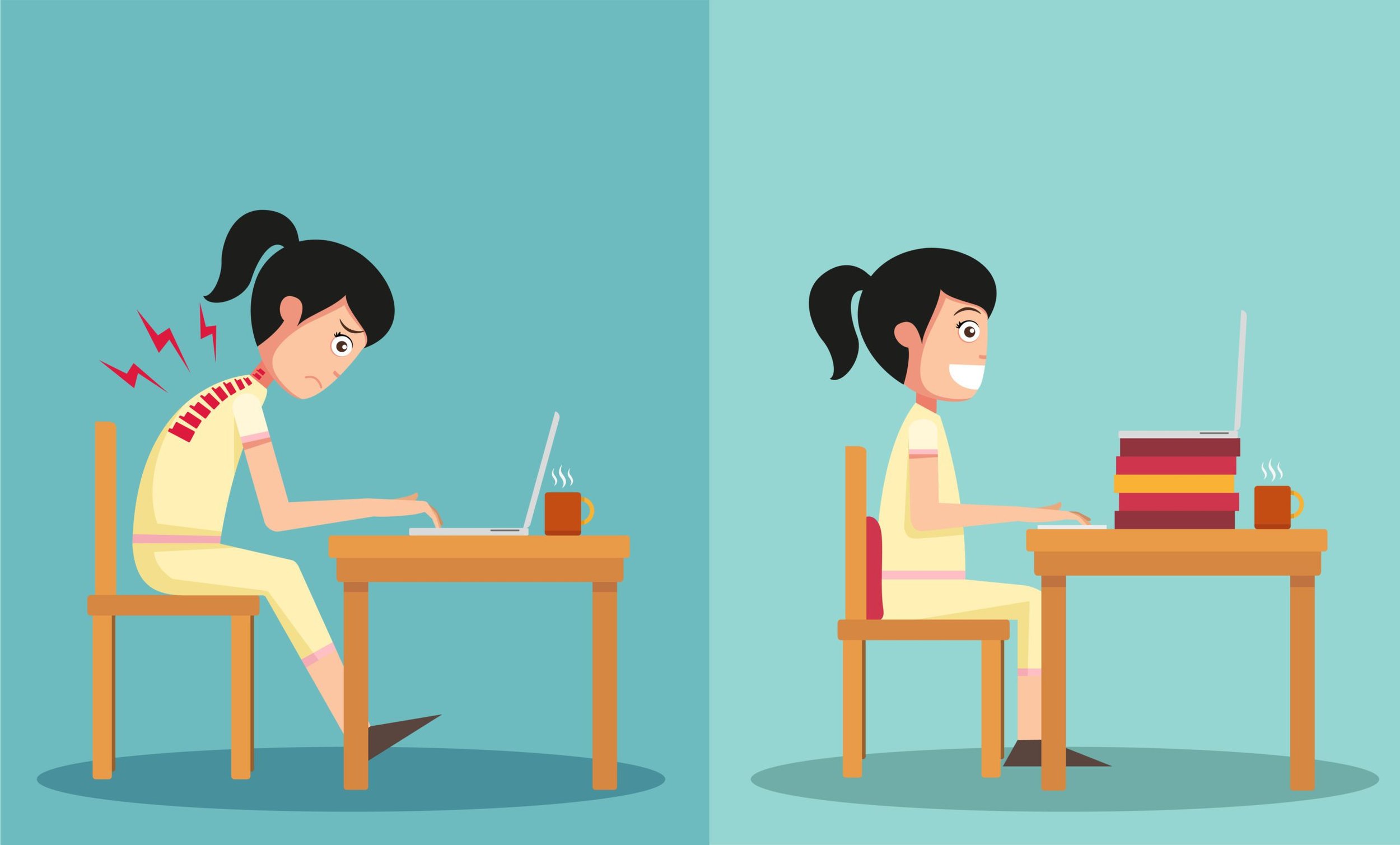Sit with Support!
This past year brought on a lot of changes. Many of us are working from home more or finding ourselves in different work environments.
At Active Living Chiropractic, we often get asked questions on ergonomics and how to set up a workstation. While everyone’s set-up and needs are different, I encourage patients to think more about the way they sit and how this affects their bodies.
Your body needs to have support to allow optimal uprighting of the spine and “good posture”. There are two main zones of support to think about when sitting, the ground and the surface you are sitting on – which is usually a chair. The third zone of support could be considered if you have a desk/keyboard surface.
Zones of Support:
First Zone Of Support: The Ground
Start from the ground up with your feet on the ground and even support through each foot. Think of this as the foundation – it needs to be solid.How many times do you catch yourself sitting with your feet hanging/dangling and not touching the ground? You may be doing it right now! Your feet need to be on the ground or on a firm source of support for your body to feel supported.
Allow your feet to rest on the floor about hip-width apart
If your chair is adjustable, select a comfortable height that allows your knees to be lower than your hips. If your feet do not touch the ground in this position, you may need to put your feet on a footstool so they are able to ground for support.
Feel “grounded” throughout the whole foot. You can imagine 4 pillars in the corners of each foot, they should feel even support of this foundation.
Your ankle should be in a neutral position when all 4 pillars are even through the foot.
Your knees should be stacked on top of your ankles.
Second Zone Of Support: The Chair or surface you are sitting on
Your body also needs to feel support from the surface of the chair. It can only do this properly from a neutral pelvis, feeling support under the sit bones.
Neutral Pelvis - how to find it
While you are sitting, allow your “sit bones” – anatomically called your ischial tuberosities – to come in contact with the surface you are sitting on. These two points are your zones of support on the chair.
Make sure you are sitting evenly on both sit bones.
If you are having a tough time locating these, you can slide your hands between the chair and the part of your body touching the chair. Feel for the bony part of your body in contact with the chair.
Now tilt/rock your pelvis forwards (anterior pelvic tilt) then backward (posterior pelvic tilt).
Feel for the position halfway in between anterior and posterior pelvic tilt – know as Neutral Pelvis – when the bony protuberances are in the most contact with the chair.
If you are like the vast majority of people who slouch, your pelvis is likely in a posterior pelvic tilt. This sets up a domino effect for the rest of your spine, as it is really hard to sit with a good posture from this position. Your muscles and ligaments have to work harder to keep you “upright” which leads to tension and eventually pain. Correcting this to neutral and feeling support under your sit bones will allow proper uprighting of the spine and will actually be less work for you to maintain good posture!
Third Zone of Support: The desk/keyboard surface
Your desk or keyboard can be considered another zone or support.
Try resting your forearms or hands while you type/mouse.
Your upper arms and elbows should rest comfortably beside your body
Your elbows should be roughly 90 degrees and your forearms and wrists should sit parallel to the floor
Feeling the support from the desk, allow your spine to upright further
Putting it all together…
Now, feel all zones of support – the floor, your chair, and your desk
Check to make sure your pelvis is neutral
Feeling your support, grow tall through the crown of your head
Allow your shoulders to relax and drop away from your ears.
Stay relaxed and open through your chest
BREATHE! Diaphragmatic Breathing will help stabilize your core as well as many other benefits. See Chris Carlson’s post on the Benefits of Diaphragmatic breathing here.
Check-in with your body every 20 minutes. If possible, get up and move around! Or change positions with a sit-stand desk.
The same principles apply to standing – Support from the floor - neutral pelvis - support from the desk - uprighting of the spine - relax shoulders, open chest - BREATHE!
If you have any questions about sitting or workstation ergonomics, please check-in with one of our practitioners at Active Living Chiropractic!
If you’re looking for a great chair made by a Canadian company, I personally love the Core Chair. It promotes Active Sitting. Read more about it here and use Promo code: ActiveSitting for 15% off your purchase!





